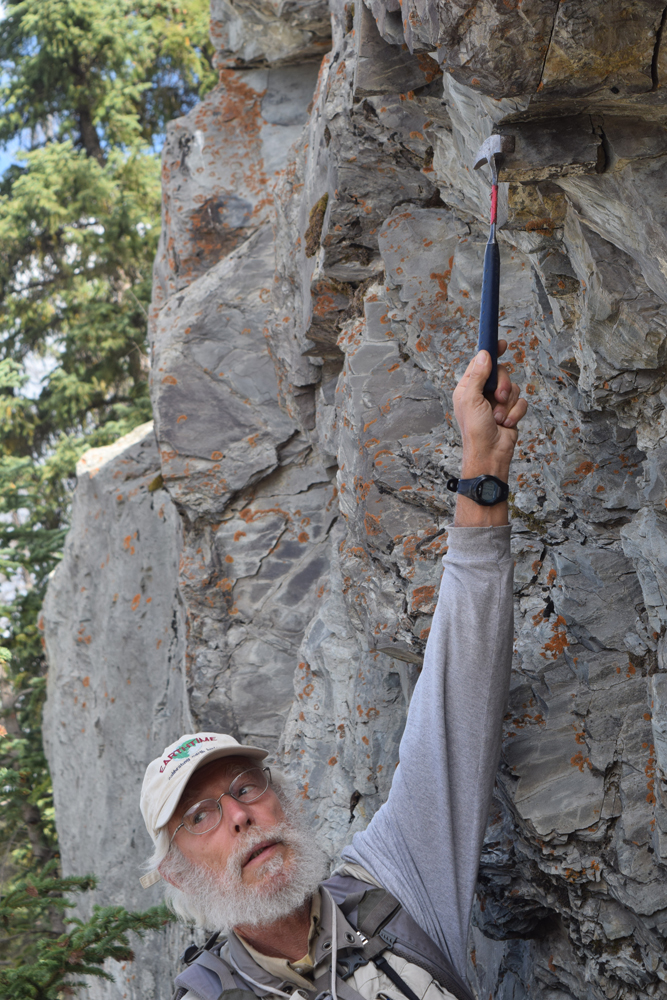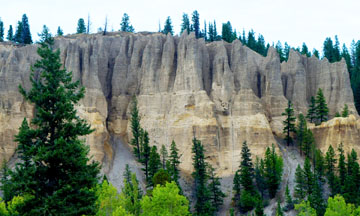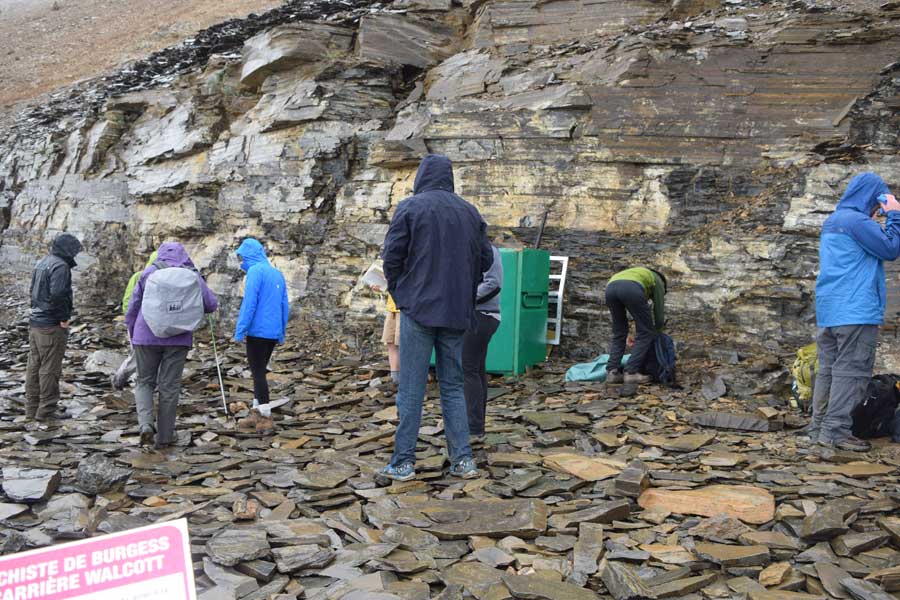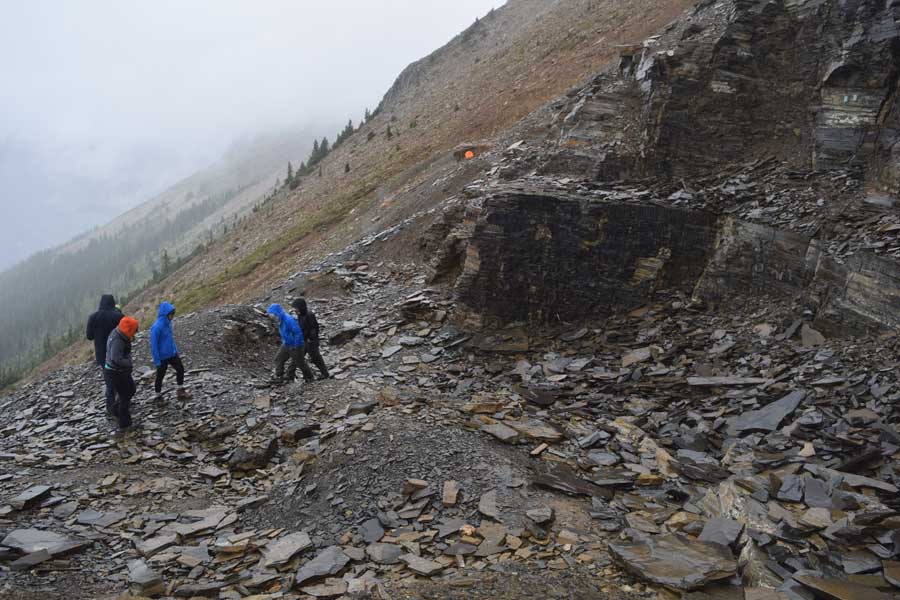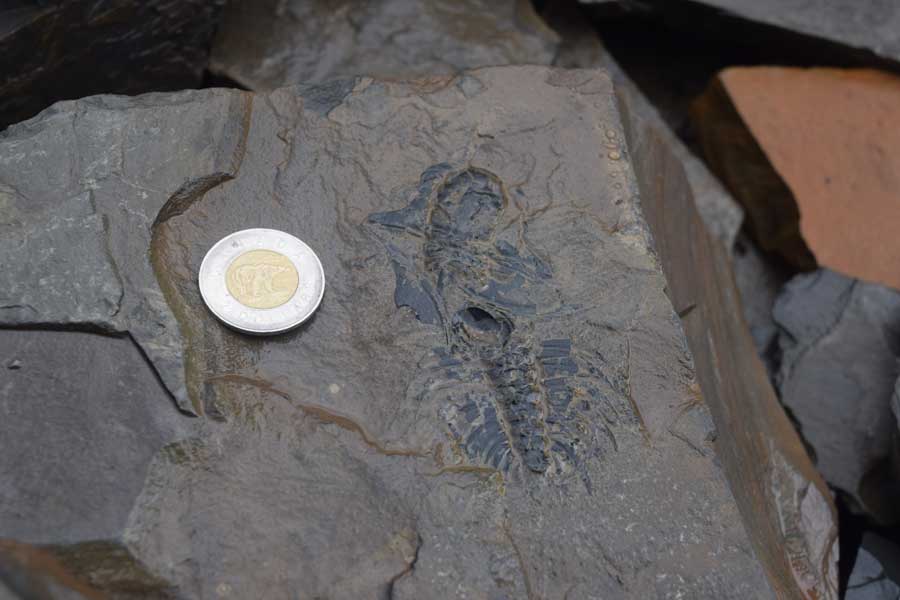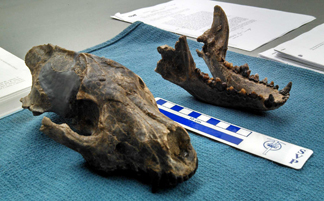The AWG 2014 Canadian Rockies Field Trip took place from August 28 to September 7, 2014, with a Calgary-area geology pre-trip for early arrivals on August 27. The main part of the field trip commenced with a mid-morning departure on the 28th from Calgary, and we all headed west along Canada Highway 1 to Lake Louise. After spending two days in the Lake Louise area, we drove north to the Columbia Icefields. A few of us continued further north the next day, on an side trip to Jasper. From the Icefields we toured south to Field, British Columbia, over to Revelstoke, and ended our British Columbia time in Fernie. We then drove east, back into Alberta, and spent time at Dinosaur Provincial Park near Brooks and at the Royal Tyrrell Museum of Palaeontology in Drumheller. The trip ended with our group once more back in Calgary, Alberta.
There were 22 people as full-time field-trippers and two more people on the trip during the Icefields to Field, B.C. part of the trip. Two of the full-time trip participants were students and one of the additional, part-time trip participants, was a student. All of the students on the field trip are from Mount Royal University in Calgary and are students of our field trip leader, Katherine Boggs. Paul Hoffman and Mindy Brugman also helped out for a day or so during the trip. Marcia Knadle and Debra Hanneman did the trip budget and logistics. We had a great field trip guidebook, thanks largely to Katherine Boggs’ efforts. The field trip guidebook, “Tectonics, Climate Change, and Evolution: Southern Canadian Cordillera” will be on sale at the AWG online store soon.

Some of us took to the water and canoed around Moraine Lake near Lake Louise, Alberta. Moraine Lake is located within the valley known as the “Valley of the Ten Peaks” which was once featured on the Canadian twenty dollar bill.

Katherine Boggs talks to the field trip crew about area geology at a stop along the Icefields Parkway in Alberta.

Our intrepid field crew hikes the Athabasca Glacier, one of the six major glaciers of the Columbia Icefield.

Some of the field trip group took the arduous hike up to the famous Walcott Quarry that is developed within the Cambrian Burgess Shale near Field, British Columbia.

A member of our field trip group shows us one of the Burgess Shale’s trilobites while at the Walcott Quarry.

One of the trip’s frequent rainy days – but we still had fun by the Kicking Horse River at its confluence with the Columbia River, near Golden, British Columbia.

Our field trip group poses by Columbia Lake, which forms the headwaters for both the Columbia and Kootenay rivers, and lies within the enigmatic Rocky Mountain Trench near Canal Flats, British Columbia.

